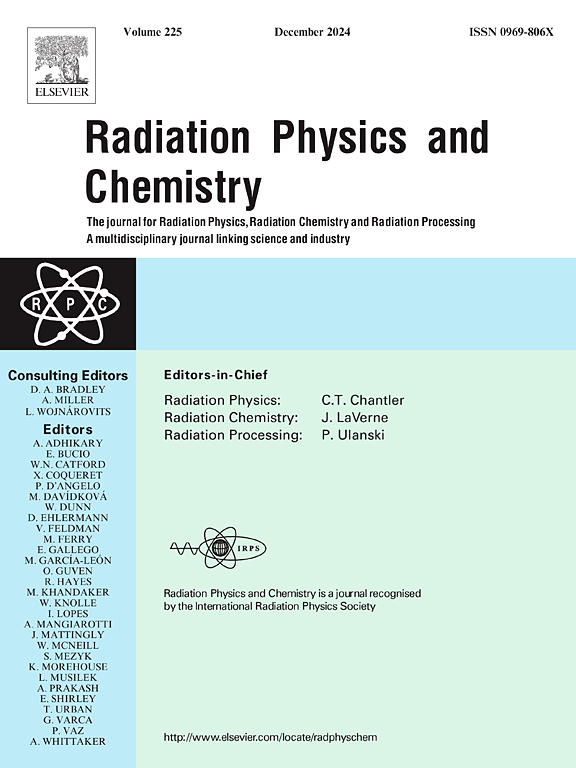用于剂量测定应用的 2-20 Gy 光子剂量下生物炭的热致发光和结构表征
IF 2.8
3区 物理与天体物理
Q3 CHEMISTRY, PHYSICAL
引用次数: 0
摘要
本研究旨在开发一种用于剂量计的热释光(TL)材料,其性能有可能超过现有的被动剂量计。研究重点是富含碳的生物炭的基本热致发光特性。研究人员考察了市售生物炭在剂量为 2 Gy 到 20 Gy 的 Linac X 射线光子束照射下的主要热释光(TL)剂量学特性。这些特性包括剂量反应、灵敏度、TL 辉光曲线、能量依赖性和衰减。结果表明,生物炭在所研究的剂量范围内具有出色的线性响应,在较低剂量下也很敏感。生物炭样品的再现性很好,标准变化小于 3%。此外,还进行了褪色研究,发现了环境光和暗室条件下的最小褪色率。生物炭的微观结构降解与剂量有关,这一点通过 SEM/EDX 分析得到了证实。拉曼光谱和 X 射线衍射(XRD)对辐射剂量引起的结构变化进行了监测。动力学参数分析也证实了光子辐照带来的结构变化。因此,生物炭显示出在剂量测定应用中的巨大潜力。本文章由计算机程序翻译,如有差异,请以英文原文为准。
Thermoluminescence and structural characterization of biochar in the photon doses of 2–20 Gy for dosimetric applications
The present study aims to develop a thermoluminescence (TL) material for dosimeter that might potentially surpass the performance of passive dosimeters that are currently available. The study focuses on the essential TL characteristics of biochar that is rich in carbon. The main thermoluminescence (TL) dosimetric properties of commercially available biochar under exposure to X-ray photon beams from Linac at doses ranging from 2 Gy to 20 Gy have been examined. These properties include dose response, sensitivity, TL glow curve, energy dependency, and fading. It has been demonstrated that the biochar provides an excellent linear response in the dose range under study and sensitive at lower dose. The biochar sample demonstrated great reproducibility, with a standard variation of less than 3%. Furthermore, a fading study was conducted and a minimum rate of fading for ambient light and dark room circumstances was discovered. The dose-dependent microstructural degradation of biochar is confirmed by SEM/EDX analysis. The structural changes caused by the radiation doses are being monitored using Raman spectra and X-ray diffraction (XRD). The kinetic parameters analysis also confirms the structural alteration brought by photon irradiation. As a result, biochar demonstrates the significant potential to be used in dosimetric applications.
求助全文
通过发布文献求助,成功后即可免费获取论文全文。
去求助
来源期刊

Radiation Physics and Chemistry
化学-核科学技术
CiteScore
5.60
自引率
17.20%
发文量
574
审稿时长
12 weeks
期刊介绍:
Radiation Physics and Chemistry is a multidisciplinary journal that provides a medium for publication of substantial and original papers, reviews, and short communications which focus on research and developments involving ionizing radiation in radiation physics, radiation chemistry and radiation processing.
The journal aims to publish papers with significance to an international audience, containing substantial novelty and scientific impact. The Editors reserve the rights to reject, with or without external review, papers that do not meet these criteria. This could include papers that are very similar to previous publications, only with changed target substrates, employed materials, analyzed sites and experimental methods, report results without presenting new insights and/or hypothesis testing, or do not focus on the radiation effects.
 求助内容:
求助内容: 应助结果提醒方式:
应助结果提醒方式:


